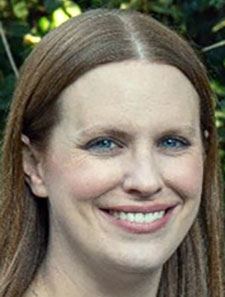“How many of you have been a part of or have run crappy meetings?” Brad Sharpe, MD, hospitalist and professor of medicine at the University of California, San Francisco, asked the audience during his session at SHM Converge 2025. Almost everyone in the room raised their hand, and over the next hour, they were introduced to the knowledge and skills needed to make future meetings much more engaging by a speaker who has a wealth of leadership experience.
Meetings are held for different purposes, such as sharing information, building relationships, and solving problems, and Dr. Sharpe framed his talk with this key point. Effective meetings should be considered in three parts: before, during, and after. Before the meeting, it is vital to define the purpose of the meeting and determine the type of meeting to match the purpose.
Briefing-type meetings are typically for information sharing and are often led by one person, reporting to a large group. Board or committee meetings are typically for report-outs or consensus discussion, rarely for decisions or problem solving, and are led by individuals with group discussions. Problem-solving meetings typically involve everyone in active problem solving and decision making, with the optimal meeting size of five to eight participants.
The importance of setting an agenda before a meeting was also emphasized as it not only defines topics with time allocations, but also identifies people, clarifies the purpose, and outlines the process. The three “Ps” of people (topic leader), purpose, and process will help frame the meeting agenda with ease. Sending the agenda to the meeting participants promptly is an important, often overlooked step. During the meeting, make sure to start on time and end 10 minutes early with an already established final agenda item of “decide next steps” or “action plan.” Establishing group ground rules is fundamental to running effective meetings. Poor meeting behavior often begets poor behavior, so setting behavior expectations before the meeting or norming with meeting participants to determine ground rules could be options depending on your meeting. During the meeting, remember to follow the timing outlined on the agenda so people (topic leaders) stay on time.
It may be evident, but a good reminder nonetheless is that to have an effective meeting, participants must be engaged. Dr. Sharpe offered some excellent tips on engaging even the most introverted participants, such as “I want to hear from you, Lisa and Juan, so I will be asking for your input in a few minutes …” Finally, end the meeting on time, with an action plan in those final 10 minutes you have allocated on the agenda.
After the meeting, it’s valuable to send a follow-up message to participants. This could include positive reflections, action items, a summary of the meeting, or formal minutes that can be generated using AI. Providing feedback or sharing reflections after the meeting is also an important way to effectively address the outcome of the meeting.
Dr. Sharpe finished his session by reviewing best practices in virtual meetings, which are all too familiar to those of us in a post-pandemic world, including using technology correctly, maintaining ground rules, and ensuring participant engagement. A noticeable difference for effective virtual meetings, however, is the wait time that must be allowed for audience response. It is better to wait longer virtually than in person: 10 seconds at least.
Some miscellaneous tips shared at the end of the session included: recognizing that one-on-one meetings still have the aforementioned rules; acknowledging high-functioning teams often spend more time thinking about non-work-related topics, so consider an ice breaker or something else fun to discuss as a team at the start of the meeting; offering food or snacks; and ending your meeting with joy, gratitude, or praise.
By studying these tips and tricks, practicing these approaches, and experiencing meetings again and again, you too can run effective meetings. If you would like to try any or all of these tips but need greater buy-in from your group, just invoke Dr. Brad Sharpe and his excellent session at Converge 2025. Tell your colleagues, “Dr. Brad Sharpe said we should do this!” and you too will run more effective meetings.
Key Takeaways
- Running meetings effectively is a skill you can learn!
- All meetings take time, effort, and energy to prepare, run, and review.
- Remember to define the meeting purpose, decide the meeting type, set and send an agenda, set and enforce ground rules, engage participants, end the meeting with joy and gratitude, and send something out afterwards.
 Dr. Burns is an academic hospitalist, associate professor, director of continuing medical education, and the vice section chief for faculty development in the division of hospital medicine at the University of New Mexico School of Medicine in Albuquerque, N.M.
Dr. Burns is an academic hospitalist, associate professor, director of continuing medical education, and the vice section chief for faculty development in the division of hospital medicine at the University of New Mexico School of Medicine in Albuquerque, N.M.